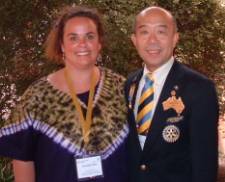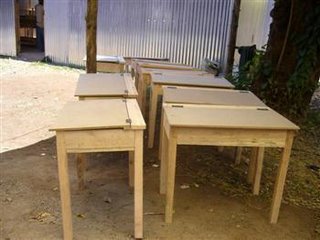
Esuvat lives with her family in a poor village.

Like everyone else, she does her share of chores – carrying water is a daily task. Unicef reports that the unavailability of water within a reasonable distance correlates directly to low rate of school attendance and high rate of drop out by girls. This is due to the disproportionate amount of domestic work, such as water fetching, that rests on girls.

School gives her a good education as well as friendships.


At the School of St Jude, sponsorship includes clothing (uniform), meals and bus transport. Esuvat uses the crowded school buses to get to school.

After school, she takes the bus and then walks home.

At home, her daily chores are waiting.

Esuvat started at the School of St Jude in 2004. In the Std 4 exams at the end of 2005, she placed first in the district of 17,000 students. This very bright girl from a very poor family will have the opportunity to reach her high potential and contribute her talents to the future of her country, thanks to the generosity of sponsors, donors and helpers world-wide.

Esuvat is only one of the many bright children who live in a cycle of continuing poverty. The School of St Jude aims to Fight Poverty Through Education. With our help, their future will be brighter.








































